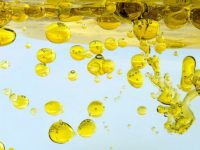Gear Up For Reliability: Using Oil Analysis & Contamination Control to Improve Gearbox Health Gearboxes are marvels of design and engineering. To ensure reliable operation, there must be a concentrated focus on ensuring the gearbox's health. Effective contamination control, combined with a well designed oil analysis program, can dramatically improve reliability, reduce waste, and provide…
Read more
Don’t Risk Lubrication Contamination
Don't Risk Lubrication Contamination Contaminated lubricants account for nearly half of all lubricant related failures. Lubricants become contaminated with either solid or liquid contaminants. Solid contaminants act as abrasives causing severe damage to internal components. Solids also clog filters and orifices restricting oil flow and resulting in lubricant starvation. Liquid contaminants such as water will…
Read more
Understanding Oil Analysis: How It Can Improve Reliability of Wind Turbine Gearboxes
Understanding Oil Analysis: How It Can Improve Reliability of Wind Turbine Gearboxes [caption id="attachment_885" align="alignright" width="224"] Click on the image to read the article[/caption] Reliability has been defined as the ability to rely on equipment to produce what it is scheduled to produce, when it is scheduled to produce it, for as long as…
Read more
How To Monitor Your Turbine Oil’s Health

How To Monitor Your Turbine Oil's Health Turbine oils, particularly those used in steam turbines, are expected to last 10 to 20 years. During this lifespan, careful monitoring of the lube oil's physical and chemical properties, together with common contaminants such as water and solid particles, is required and should be performed annually. This is…
Read more
Can you identify the type of wear?

Can you identify the type of wear? Analytical Ferrography allows analysts to visually examine wear particles present in a sample. A trained analyst visually determines the type and severity of wear deposited onto the substrate by using a high magnification microscope. The particles are readily identified and classified according to size, shape, and metallurgy. The image…
Read more
Water In Oil, What’s the Big Deal?

Water In Oil, What's the Big Deal? Water in lubricating oil has been a point of keen debate as long as oil analysis has been used to monitor equipment and lubricant condition. How much is too much? Where does it come from? Does it really hurt equipment? What form of water is of concern? How…
Read more

